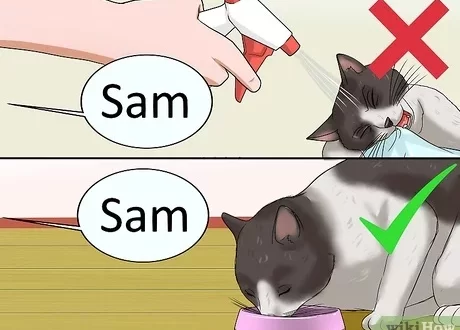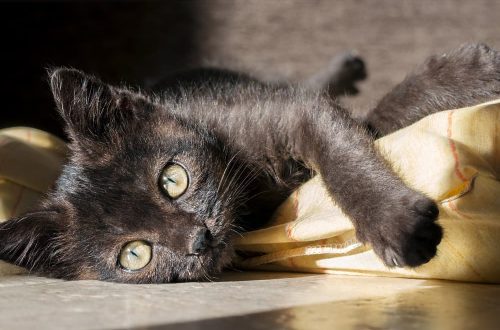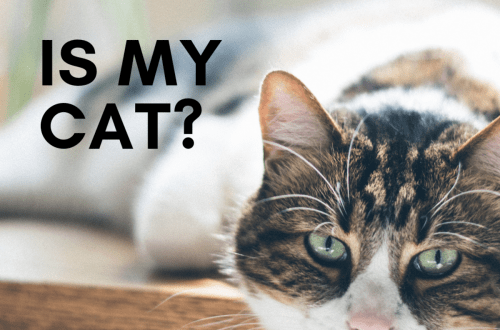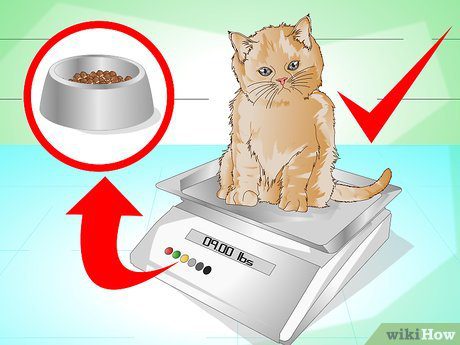
How to help your cat gain weight
Understanding if a cat is too thin can be difficult. According to some reports, more than 50% of cats in developed countries are overweight or obese, so pets with a normal weight may seem unhealthy thin to their owners. The degree of thinness of a cat can also be difficult to determine if it has long hair or a droopy belly, which can often be found in spayed and neutered animals.
And although the thinness of a cat is not always a reason for an urgent visit to the veterinarian, the question may arise: what to feed a cat so that she gains weight?
Contents
 How to determine if a cat is too thin
How to determine if a cat is too thin
- Assessment of body condition. To assess the weight of pets, veterinarians use a point scale for assessing body weight, which can be compared with a human body mass index. The Body Condition Assessment Chart will help you determine if your cat is too thin. Such tables are available on the Internet or from a veterinarian.
- Manual check. You can feel the ribs of the cat, located behind its front paws. If they feel like the back of your hand, then the cat has a normal weight. If the ribs look or feel like knuckles, the cat is too thin. If the ribs feel like a palm to the touch, then most likely the cat is overweight. How to feel the cat in the article.
Why is the cat thin and not getting better
There are two main reasons why cats are thin: either they are undernourished, or they burn more calories than they consume. A cat may not eat well due to stress, dental problems, nausea, or a number of other reasons. Animals with certain diseases need to consume more calories to maintain their weight.
Weight loss may be the first, and sometimes the only external sign of the development of the underlying disease. The problem can be exacerbated by nausea. Also, weight loss may be associated with age-related changes in digestive function – some older animals over 10 years old find it difficult to maintain a normal weight.
Another reason for excessive thinness of a cat may be the lack of access to food. When you find a malnourished stray cat, you can contact your local shelter or veterinarian for their opinion on how to get her out. Specialists may advise bringing her in for an examination, if possible. Stray cats should always be taken to a veterinarian for health checks, especially if you already have pets at home.
While thinness doesn’t necessarily mean a medical emergency, it’s important to make an appointment with your veterinarian if your cat is eating and not getting better. Your doctor can help determine the cause of your weight loss.
A situation may arise when a cat is not gaining weight well or is losing weight slowly and imperceptibly. Recent studies have shown that weight loss is one of the early signs of kidney disease and can begin up to three years earlier than other signs. Early intervention makes it possible to start treatment earlier and prolong the life of the cat. Therefore, regular check-ups with a veterinarian, which include an assessment of body weight, can be very helpful in early detection of the disease.
A situation where a cat in any condition completely stops eating is considered an emergency and requires urgent medical attention. In this case, the animal should be immediately shown to a veterinarian. A cat that does not eat for several days in a row can develop a life-threatening condition called liver lipidosis, or fatty liver syndrome.
How to feed a cat if she has lost a lot of weight
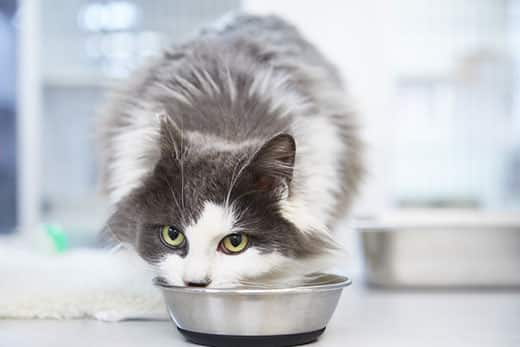 Before fattening a cat in order to gain weight, you must first take it to a veterinarian to rule out concomitant diseases.
Before fattening a cat in order to gain weight, you must first take it to a veterinarian to rule out concomitant diseases.
What to feed a cat to get better
Most cats need to increase the number of meals per day and/or provide free access to dry food in order to gain weight. Cats prefer to “graze” food in small portions throughout the day, so constant access to food can be critical. However, approval from a veterinarian must be obtained before embarking on such a nutritional plan.
If several cats live in the house, one of them can “guard” food, preventing the other from eating their fill. Ensure that all cats have access to food throughout the day in a safe and non-threatening environment.
If the cat is nervous, you should check that the food bowl is not near something that she is afraid of – a stove, an air conditioner, a noisy pipe, or a barking dog.
If the cat eats dry food, you can offer her additional canned food, or vice versa.
If the owner routinely decorates the cat’s food with toppings, mixes different foods, and fiddles with the food for a long time, you can offer regular food directly from the bag or jar in a quiet place without much fuss.
For especially picky cats, you can try different flavors and textures of both dry and wet food. Some of them prefer chicken pate, others salmon stew. You should make sure that the process of changing food is organized correctly and this will not upset the pet’s digestion.
Another option is to heat the food in the microwave for 10 seconds to intensify its flavor. It is important to remember to use a suitable microwaveable container for this.
Additionally, you can add a little liquid from canned tuna or unsalted chicken broth to the cat’s food. This method does not apply to pets that eat diet food.
Some cats simply need a higher calorie diet or additional high calorie canned medicated food. Older cats who find it difficult to maintain normal weight may benefit from a highly digestible diet rich in antioxidants, omega-3 and omega-6 fatty acids, and prebiotics.
Before changing your cat’s food or giving her nutritional supplements, you should consult with your veterinarian. A weight loss and weight gain program for pets should always be supervised by a specialist.
If it seems to the owner that the cat is eating well, but not getting better, it is better to consult with a veterinarian. He will tell you how to persuade the cat to eat more, and will be able to eliminate serious problems that may be the cause of weight loss. With a little patience and the cooperation of a veterinarian, your furry friend can return to his healthy weight.
See also:
Helping your cat lose weight
Is your cat gaining weight?
Excess weight in a cat: what diseases it leads to and how to deal with it
How much does a cat weigh normally and how to help her lose weight
4 steps for your cat’s ideal weight



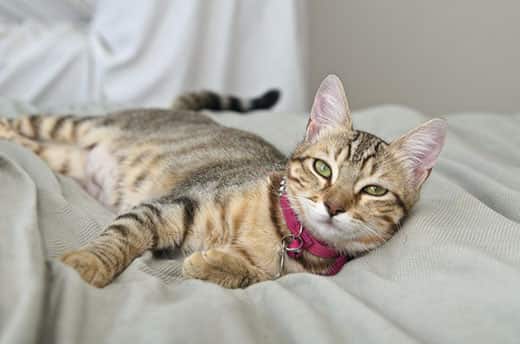 How to determine if a cat is too thin
How to determine if a cat is too thin